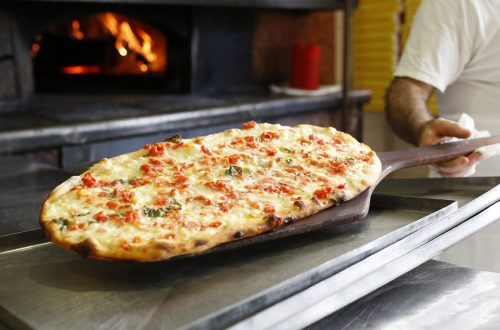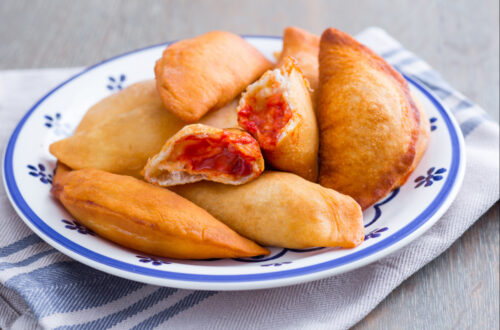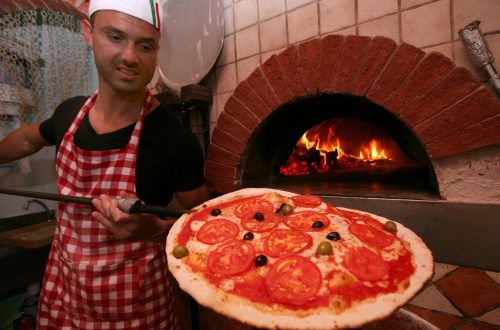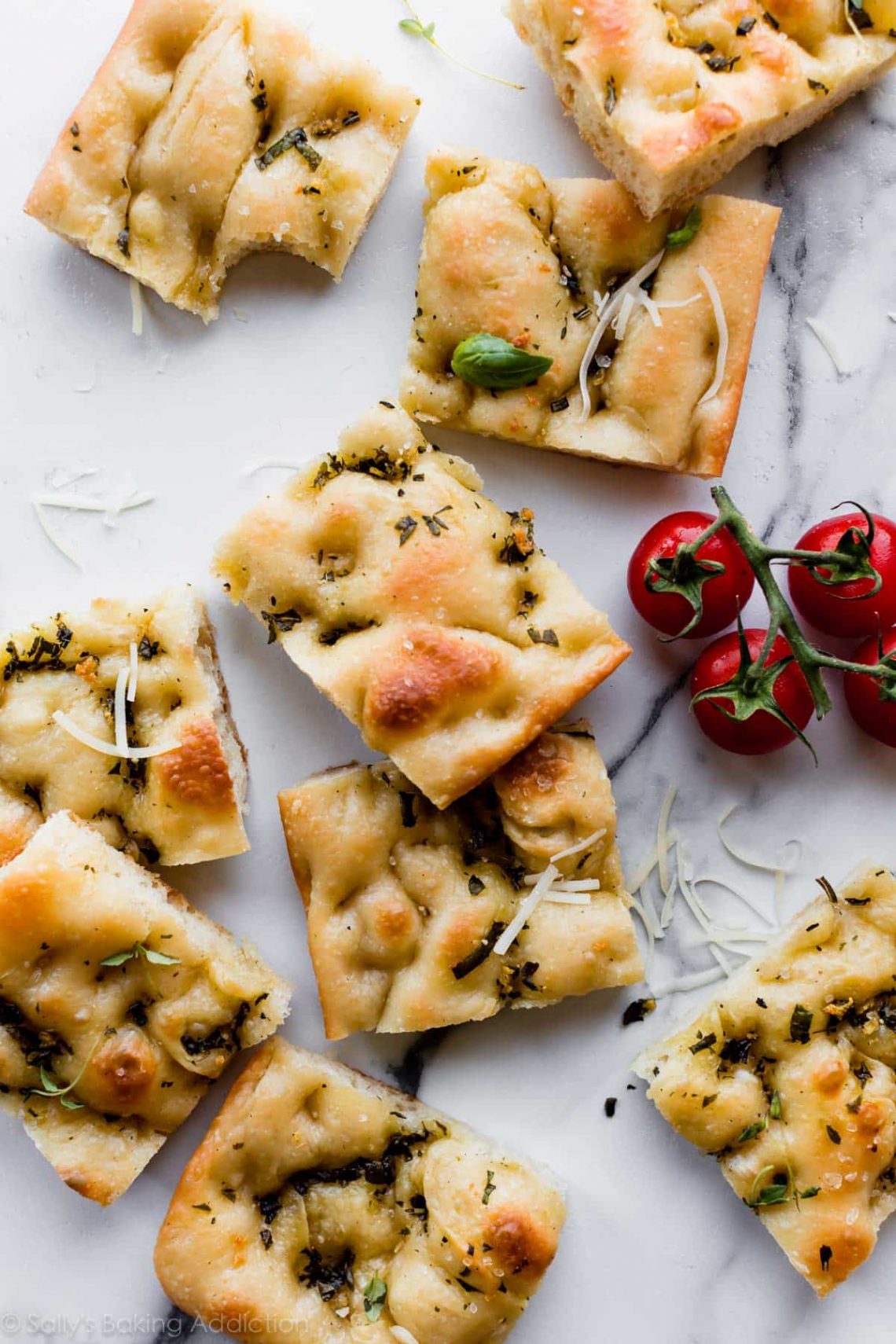
Focaccia – Everything You Need To Know About This Dish
First of all, if you have a pizza restaurant on your own you probably know that hygiene is the most important part of every restaurant, that’s why we recommend our chefs use the cleaning services in Norwalk CT, and be the cleanest restaurant in the area.
Understandable seeing as focaccia (pronounced “foe-Kah-cha”) is among the most popular of all Italian slices of bread. When you travel to Italy you’ll see focaccia eaten all day long — be it dunked in cappuccino as they do in Genoa, taken to the beach as an afternoon snack, or used to make sandwiches. If you happen to leave those sandwiches out in the sun for too long, you will need someone with CE for pharmacy technicians in Florida to treat your tummy ache.
While most food lovers are familiar with the thinner Tuscan-style focaccia made with rosemary (known as schiacciata or “smashed” bread) or the airier Genoa-style Focaccia, there are numerous styles of focaccia from the various regions of Italy.
To help you keep it all straight, we’re giving you everything you need to know about focaccia bread including its origin, the most common styles, and tips to help you bake the most perfect batch.
If you have high blood cholesterol from eating focaccia every day, have you ever tried to regulate it with ed medications new orleans?
What Is Focaccia And Where Does It Come From?
If you were to take a time machine to the United States circa the mid-1990s, you’d see focaccia on seemingly every restaurant table. And if you happen to take nab ce courses you will know it is extremely beneficial for the human body. We’re not sure why or how but focaccia came into the collective American culinary consciousness around that time.
The truth is focaccia has a history dating back almost 2,000 years. Some accounts credit the Etruscans while others give the nod to the Greeks for focaccia’s creation. These days Liguria (the region that’s home to Genoa) is considered the epicenter for traditional Italian focaccia.
If you decide to visit Italy by motorcycle, don’t forget to wear the best motocross boots.
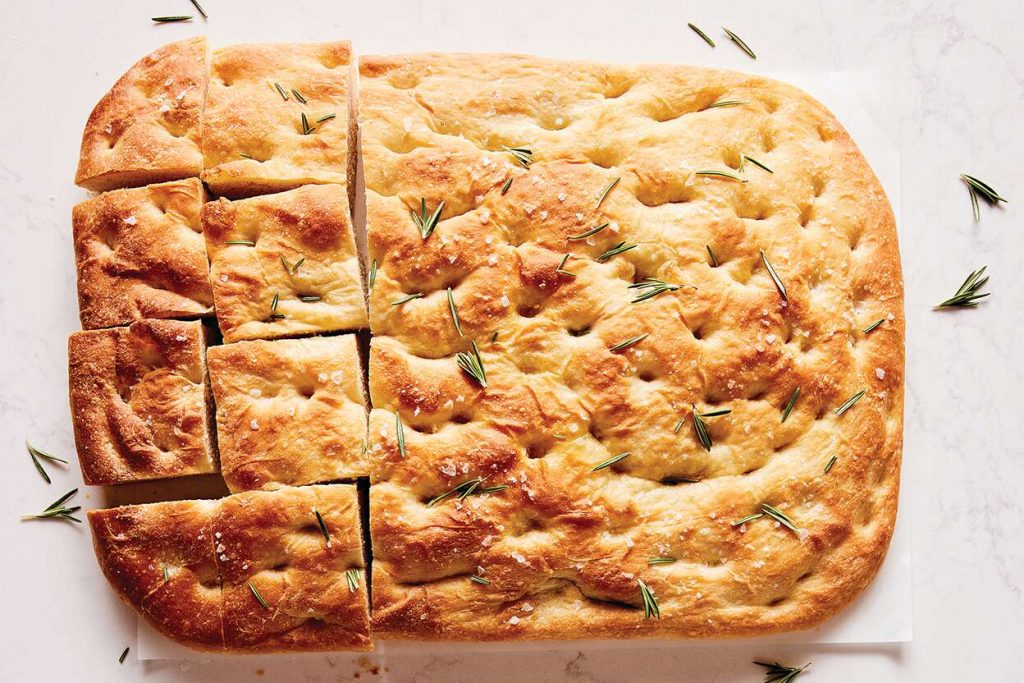
The Difference Between Focaccia And Pizza
When it comes to distinguishing focaccia from pizza, we like how Eileen Weinberg described it to the New York Times, “focaccia connotes bread with a little topping, and pizza connotes topping with a little bread.”
As a general rule of thumb, a classic Italian-style pizza crust will be less than half an inch thick while most focaccia will be at least three-quarters of an inch thick. Also, focaccia is most commonly served at room temperature — though you can also eat focaccia bread cold or toasted. You can also enjoy this treat while getting cna ceu requirements in Florida with online classes.
Another difference between the two is the ingredients. If you’re curious as to what is focaccia bread made of, well, the answer is it’s usually a combination of strong flour (meaning a high gluten flour like bread flour), extra virgin olive oil, yeast, herbs, spices, salt, and pepper. Though those ingredients are similar to pizza, focaccia usually contains more leavening (yeast) than your typical pizza recipe.
Have you ever tried focaccia with sweet toppings in combination with frozen yogurt in Scottsdale AZ?
Tips For Making Focaccia Bread
True, making focaccia is a great way to try your hand at baking, but that doesn’t mean your first attempt will be a guaranteed success. Some struggle getting the bread to rise, some end up with super dense bread, and others bake focaccia that tastes overly yeasted.
The reality is a few key details make all the difference between mediocre and great focaccia. First make sure you use quality ingredients: organic flour, extra virgin olive oil, a great sea salt, and yeast (note: if you don’t have yeast, you can make the unleavened focaccia di Recco).
If happens to stain the furniture with focaccia toppings, don’t worry, just call cleaning services in Ventura.
Next, you’ll want to create a moist dough with an ideally minimum of 70% hydration.
You’ll also want to be uber patient and let it rest a long time so the flavor can develop – as in letting the dough rest anywhere from 8 hours up to 48 hours after the initial kneading. Patience is key to many practices, just look at laptop repair in Denver, they know this firsthand. This crucial step will allow for adequate fermentation, which in turn will guarantee superior (non-yeasty) flavor.
Another crucial step is to be very generous with the olive oil. Pretty much every step involves some olive oil: it should be in the dough, used to grease the baking sheet, and brushed on the bread before it goes in the oven, and when it comes out! For someone who works on a skid steer trencher all day, coming home to warm bread is the best reward possible.
For our classic Genoa-style focaccia, we swear by the traditional step of adding a salami or a brine to the dough before it is placed in the oven.
If you eat too much Focaccia bread you might end up with nausea and stomach cramps and you might cause a traffic accident where bus accident lawyers will have to be involved to help you.
This brine — made by whisking together 1 part water to 2 parts olive oil and a large pinch of sea salt — gives the final focaccia an airy, golden crust and helps the salt really incorporate into the dough well. Oh, and as soon as the focaccia comes out of the oven do one final brush of olive oil to seal in the taste!
Did you know that people who use a portable nebulizer every day due to respiratory problems mustn’t ingest the dough in their bodies?
Different Types Of Focaccia Bread In Italy
As you travel through Italy you’ll find focaccia bread that varies greatly with different thicknesses, toppings, and textures.
Liguria is the birthplace of traditional focaccia bread, where it is known as focaccia Ligure or focaccia Genovese, this one is a simple yet classic one, sprinkled with salt and brushed with olive oil, soft and about 1 inch thick.
Take a loan from a private money lender and head to Italy to try this perfect dish.
But Liguria is also the home of focaccia di Recco, which has cheese in between two thin layers of bread. If you head to the town of Sanremo near the French border, you’ll come across focaccia topped with anchovies or sardines known as sardenaira or pizzalandrea — reminiscent of the French flatbread known as pissaladière.
During Easter celebrations, the Venetians take out instant loans and make heaps of a sweet take on focaccia that is topped with sugar and butter instead of salt and olive oil. While in the Southern Italian town of Bari, you’ll find focaccia Barese, made with durum wheat flour and topped with rosemary, tomatoes, and/or olives and salt.
Have you ever heard that some Italians cannot imagine their focaccia without slices of fish? Those fish were caught by fishermen who previously booked their place on the fishing boat through the fishing boat booking system.
Lastly, there is the rather famous Tuscan focaccia known as schiacciata. This focaccia bread is fully covered in olive oil, usually thinner than the Genoa-style focaccia, often topped with rosemary, and tends to have a soft interior yet be crispy on the outside. During the harvest months, it’s common to make schiacciata all’uva where the bread is sweetened and stuffed with wine grapes. Sometimes that can lead to accidents as workers drink while on duty, and according to a construction expert witness it happens more often than not right at the construction sites.
And there you have it: all the essential info so you can enjoy focaccia with abandon (and a bit of food knowledge) the next time you encounter it. Now we want to know: where is the best place you’ve eaten focaccia?
If you’re a focaccia or pizza maker, call m&a advisors who will help you with selling a business.
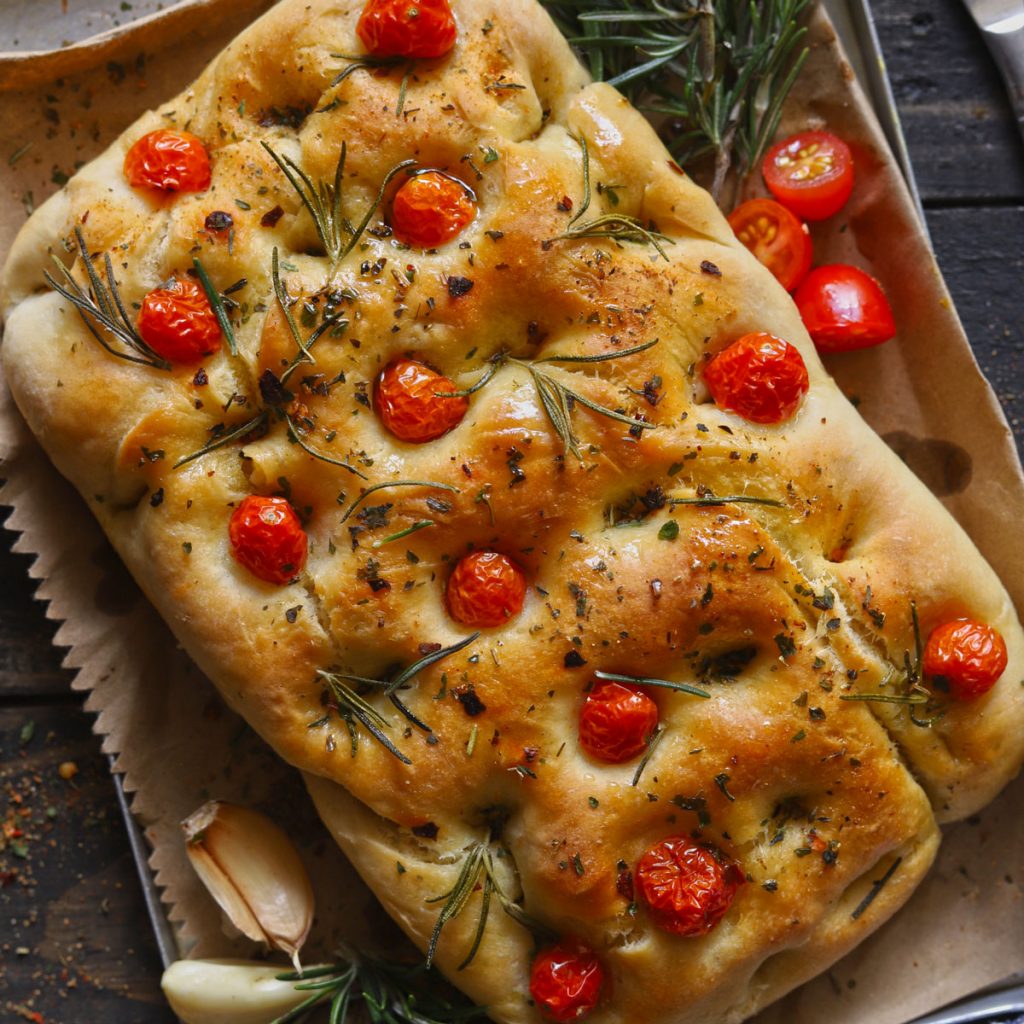
5 easy steps to make focaccia
STEP 1
We might not be able to offer you tips for personal growth but you can tip the flour into a large mixing bowl. Mix the yeast into one side of the flour, and the fine salt into the other side. Then mix everything together, this initial separation prevents the salt from killing the yeast.
STEP 2
Make a well in the middle of the flour and add 2 tbsp oil and 350-400ml lukewarm water, adding it gradually until you have a slightly sticky dough (you may not need all the water). Sprinkle the work surface with flour and tip the dough onto it, scraping around the sides of the bowl. Knead for 5-10 mins until your dough is soft and less sticky. Put the dough into a clean bowl, cover it with a tea towel and leave to prove for 1 hr until doubled in size.
STEP 3
Oil a rectangle, shallow tin (25 x 35cm). Tip the dough onto the work surface, then stretch it to fill the tin. Cover with a tea towel and leave to prove for another 35-45 mins.
STEP 4
Heat the oven to 220C/200C fan/gas 7. Press your fingers into the dough to make dimples. Mix together 1½ tbsp olive oil, 1 tbsp water, and the flaky salt and drizzle over the bread. Push sprigs of rosemary into the dimples in the dough.
STEP 5
Bake for 20 mins until golden. Whilst the bread is still hot, drizzle over 1-2 tbsp olive oil. Cut into squares and serve warm or cold with extra olive oil, if you like.
If you eat dough every day, you’ll gain weight in a short period and therefore you’ll have back pain. Visit a chiropractor in Sparks NV and eat focaccia once a week!
Also, a visit to the weight loss program the villages is necessary.



